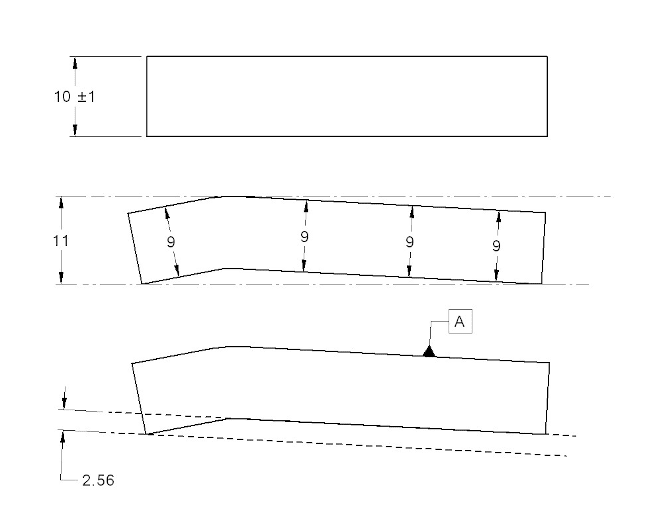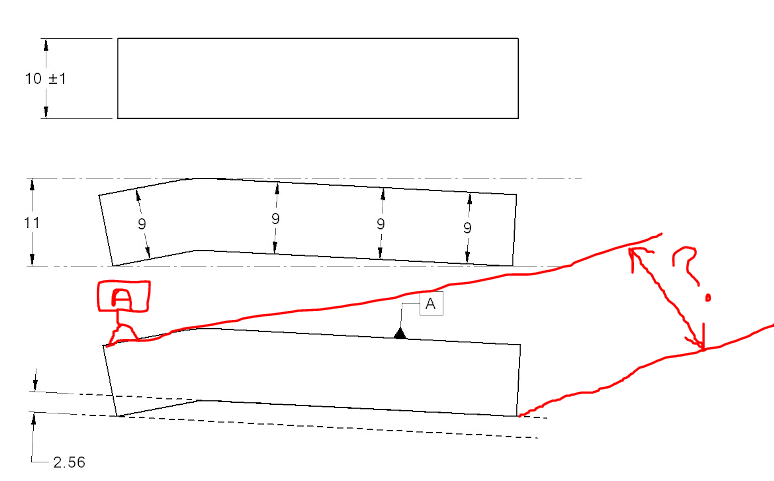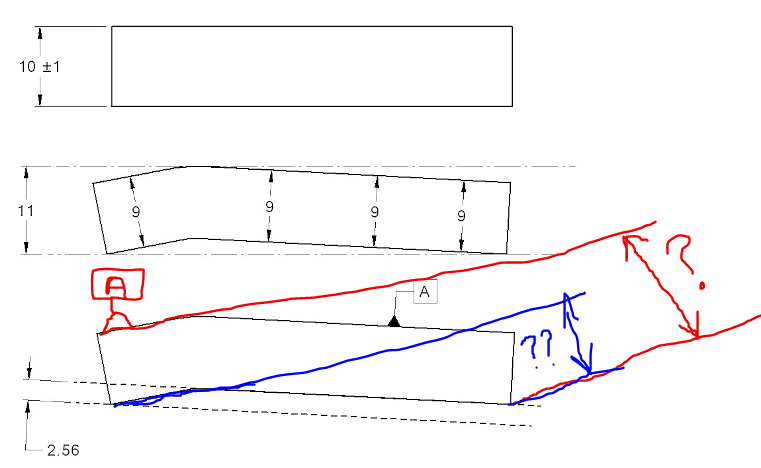Burunduk
Mechanical
- May 2, 2019
- 2,580
A lot has been said about how a size tolerance with Rule #1 limits the form of a regular feature of size. It is not mentioned in the Y14.5 and related standards or other sources I came by (except a couple of threads in this forum) that, unless it is an oversight, Rule #1 also limits the parallelism error of each face of a width relative to the opposing face. Unlike for example, for flatness applied to a surface, the standard does not instruct us to always specify a parallelism tolerance smaller than the size tolerance associated with the FOS the surface is part of (of course I mean cases when the datum feature is one face of the width and the controlled surface is the other).
Does anyone have any assumptions why the indirect parallelism control by Rule #1 so rarely gets any attention, and why there is no corresponding guidance on non-redundant parallelism tolerance values?
Does anyone have any assumptions why the indirect parallelism control by Rule #1 so rarely gets any attention, and why there is no corresponding guidance on non-redundant parallelism tolerance values?



